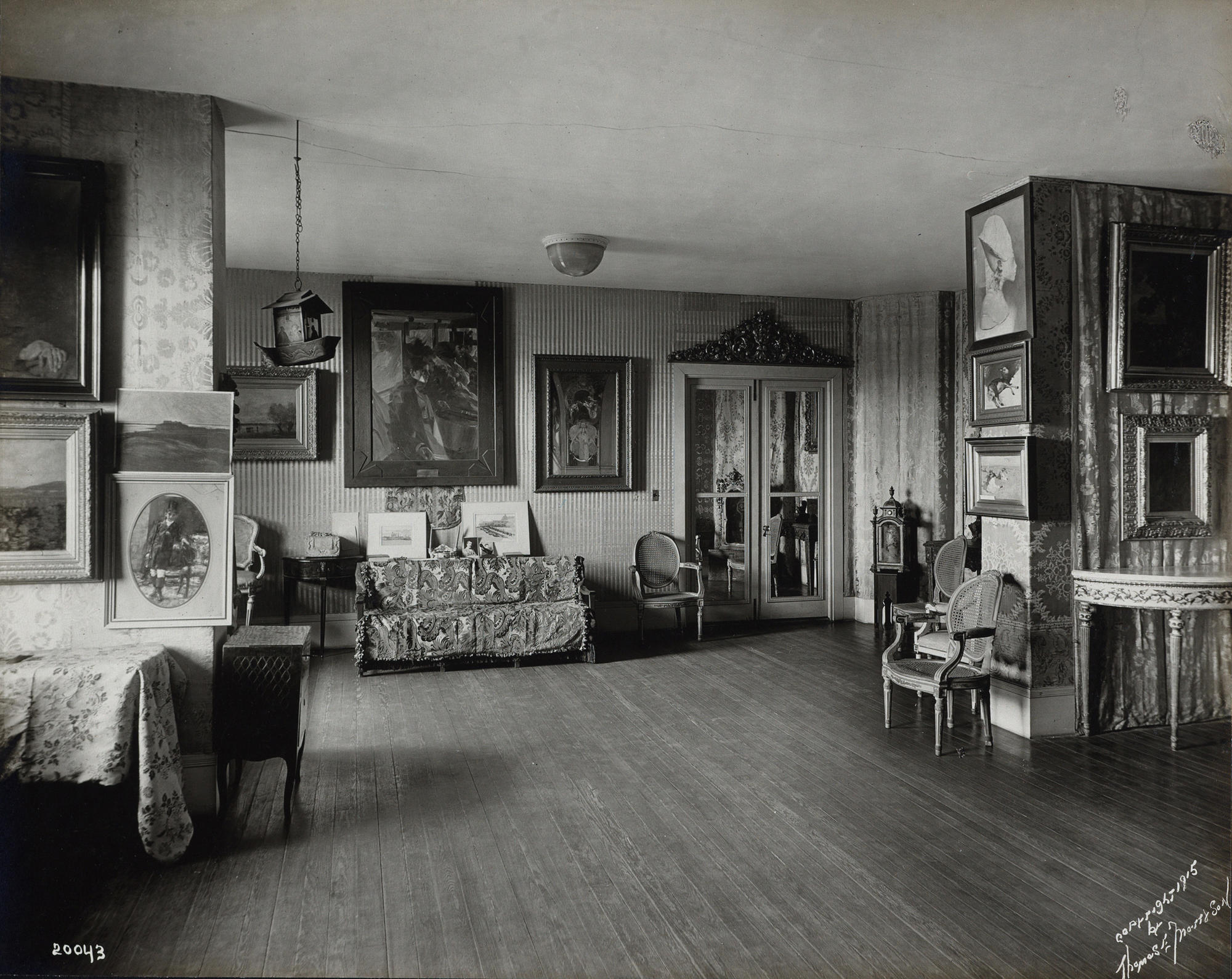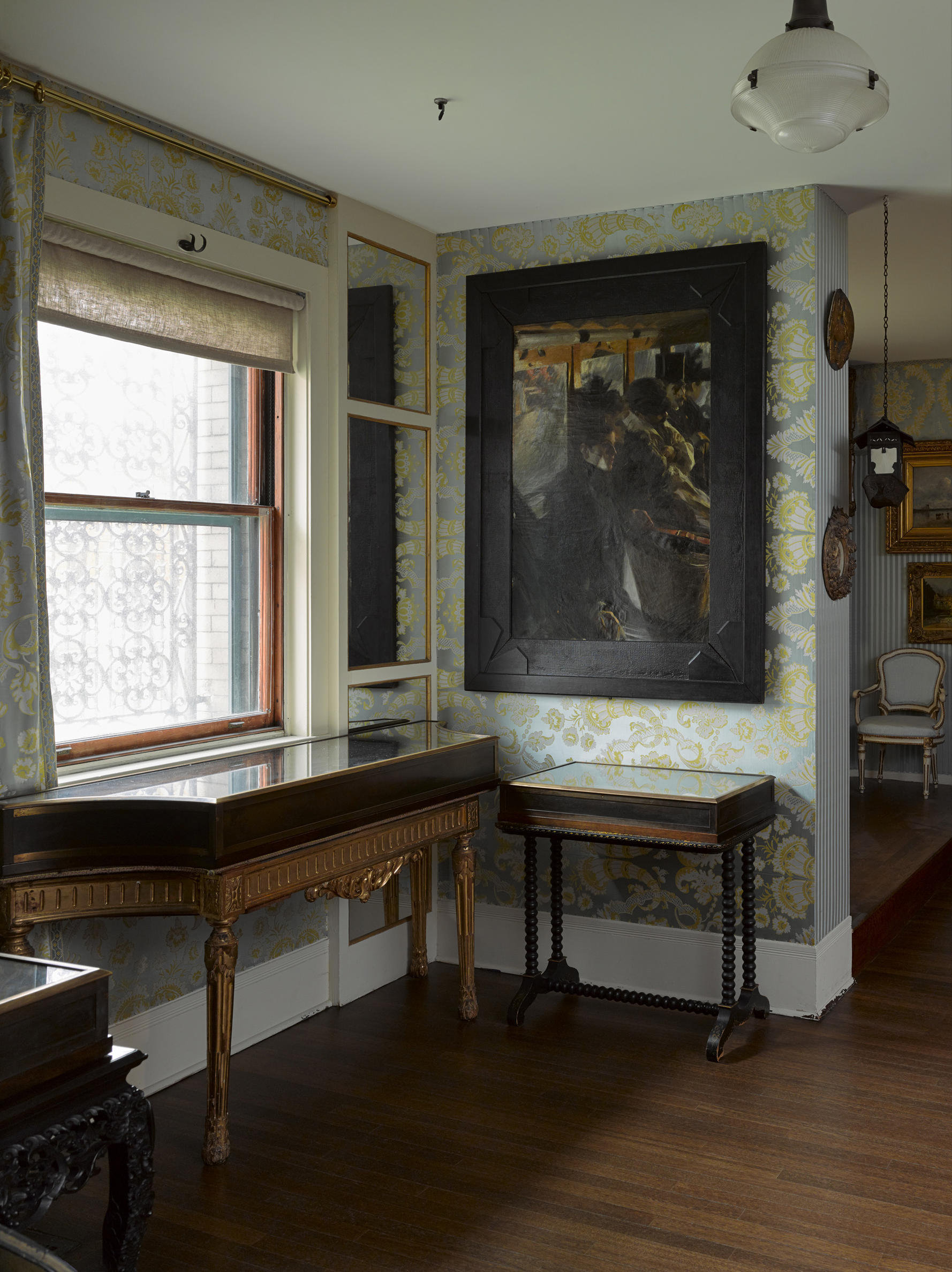Ten years earlier, Isabella purchased a painting of people riding an omnibus, a horse drawn streetcar, at the World’s Columbian Exposition in Chicago. It was painted by Swedish artist, Anders Zorn, in Paris, but the scene could easily depict modern life in Boston.
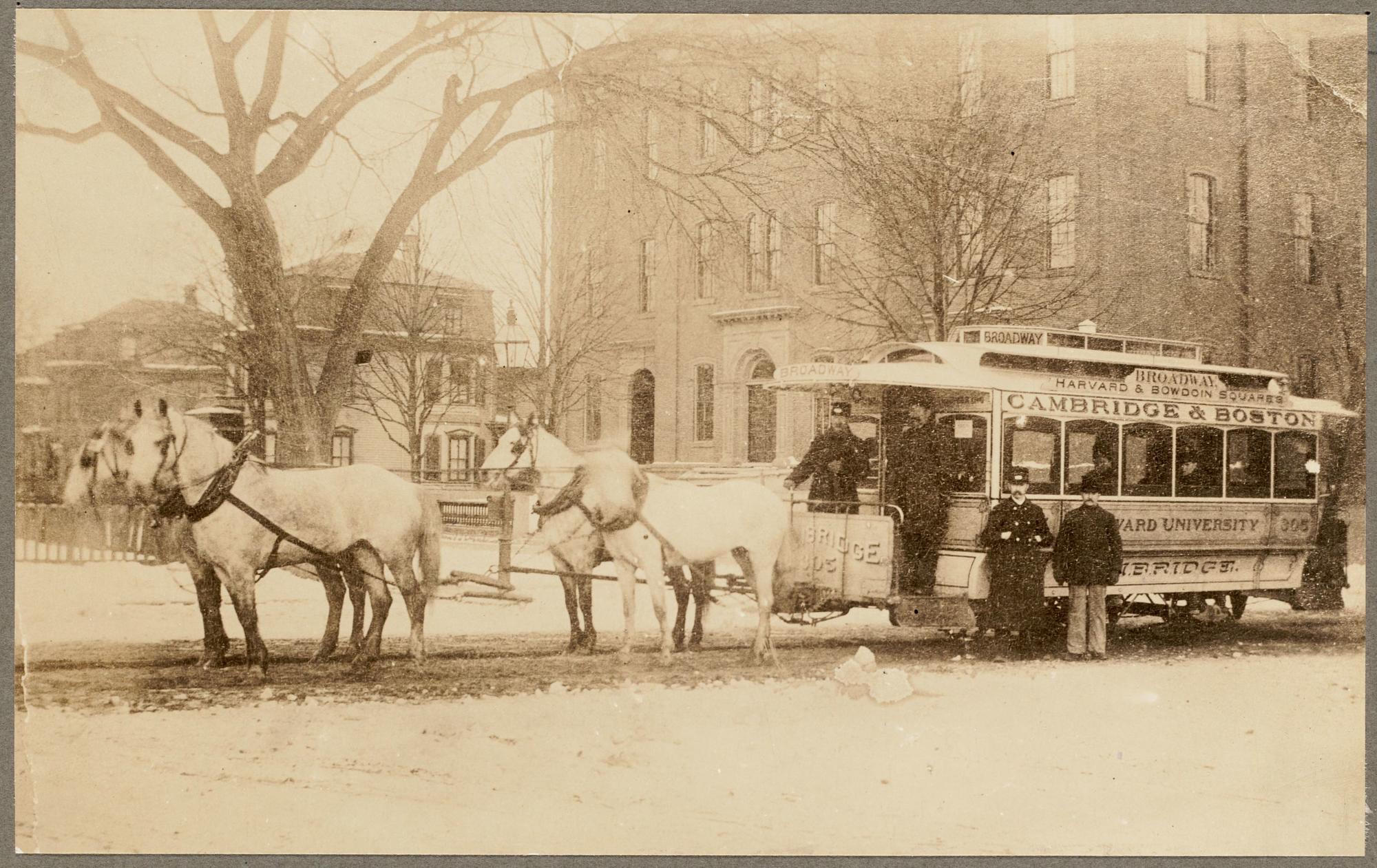
Horse drawn carriage in Boston, about 1890
Boston Public Library, photograph courtesy of the Digital Commonwealth, https://ark.digitalcommonwealth.org/ark:/50959/9593vd055 (CC BY-NC-ND 2.0)
In the late 1890s, the city included electric streetcar lines in the newly developing Fenway-Kenmore neighborhood, and by 1901, the Ipswich Street line passed near the Museum’s property.
Will you come here to supper next Sunday July 7th at 6.30 o'clock? Take either an Ipswich Street or Worcester train car & get off at Warren Street.
Even though she had access to an automobile by the early 20th century, Isabella used streetcars to get around the city, particularly after a late night at the theater. She also directed visitors, like scholar and curator of Japanese art, Kojiro Tomita (1890–1976), to do the same.

An Easy Access Car on the Ipswich Street Line in Boston, 1906
Photo: Boston Transit Commission courtesy of the Boston City Archives
The Omnibus may have appealed to Isabella because it shows independent women—like her—traveling alone, outside of the domestic sphere. Today, the costumes of the riders are distinctly old-fashioned, but the behaviors of the passengers are timeless. The woman in the foreground gazes out the window, perhaps looking for her stop, while a man nearby doses off. This scene repeats itself daily throughout the T in Boston.
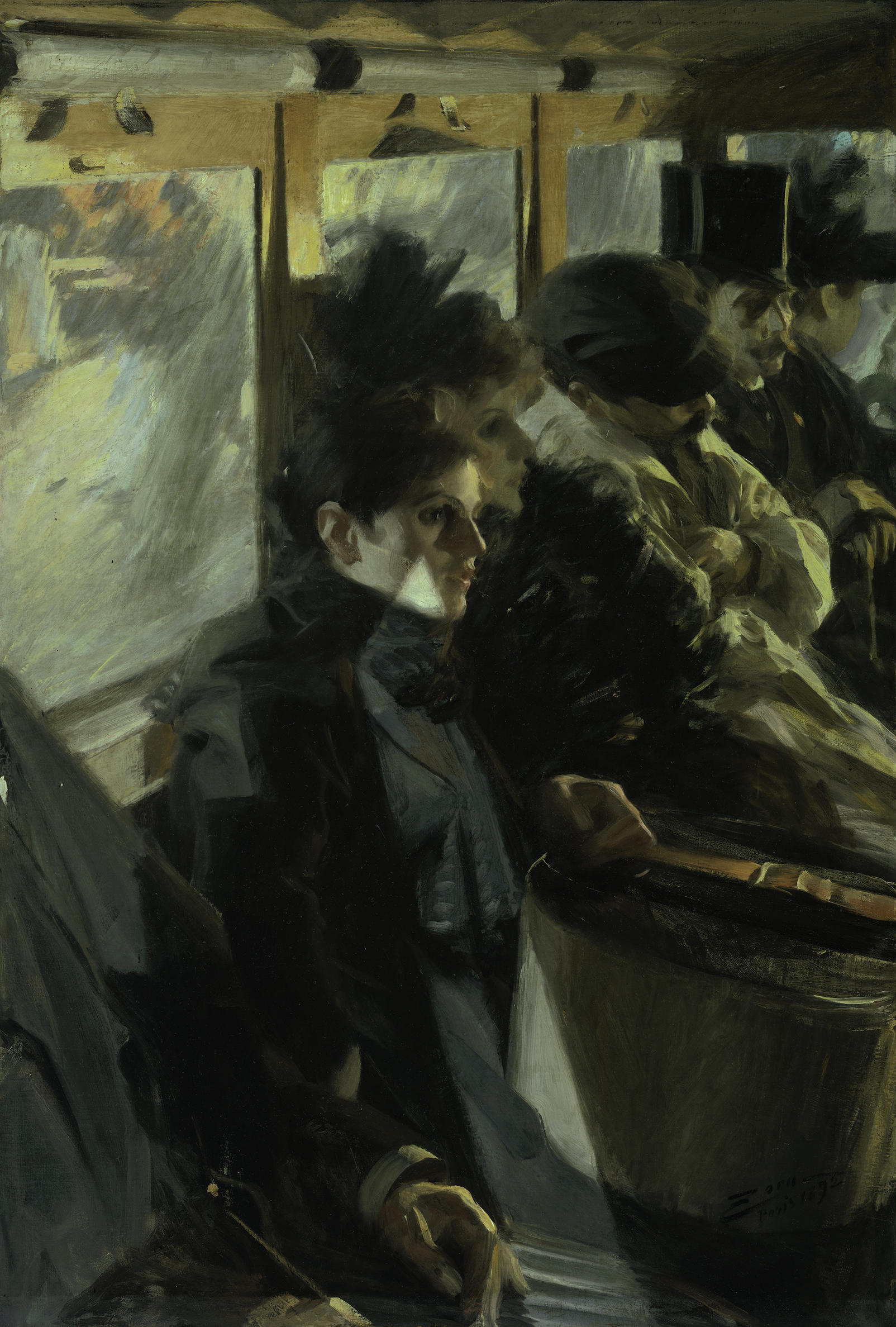
Anders Zorn (Swedish, 1860–1920), The Omnibus, 1892. Oil on canvas
Isabella Stewart Gardner Museum, Boston. See it in the Blue Room
Unfortunately, during Isabella’s time, travelers also had experiences that would not be unfamiliar to a 21st-century commuter. Prominent American socialist Edward Holton James (1873–1954, a friend of Isabella’s) did not arrive at the Museum as expected. He wrote to her in 1906, “There is a place on Massachusetts Avenue where the mighty stream of street-cars debouches into a thousand lesser and diverging currents and there I stood for a quarter of an hour waiting for an ‘Ipswich’ car, which never came.”
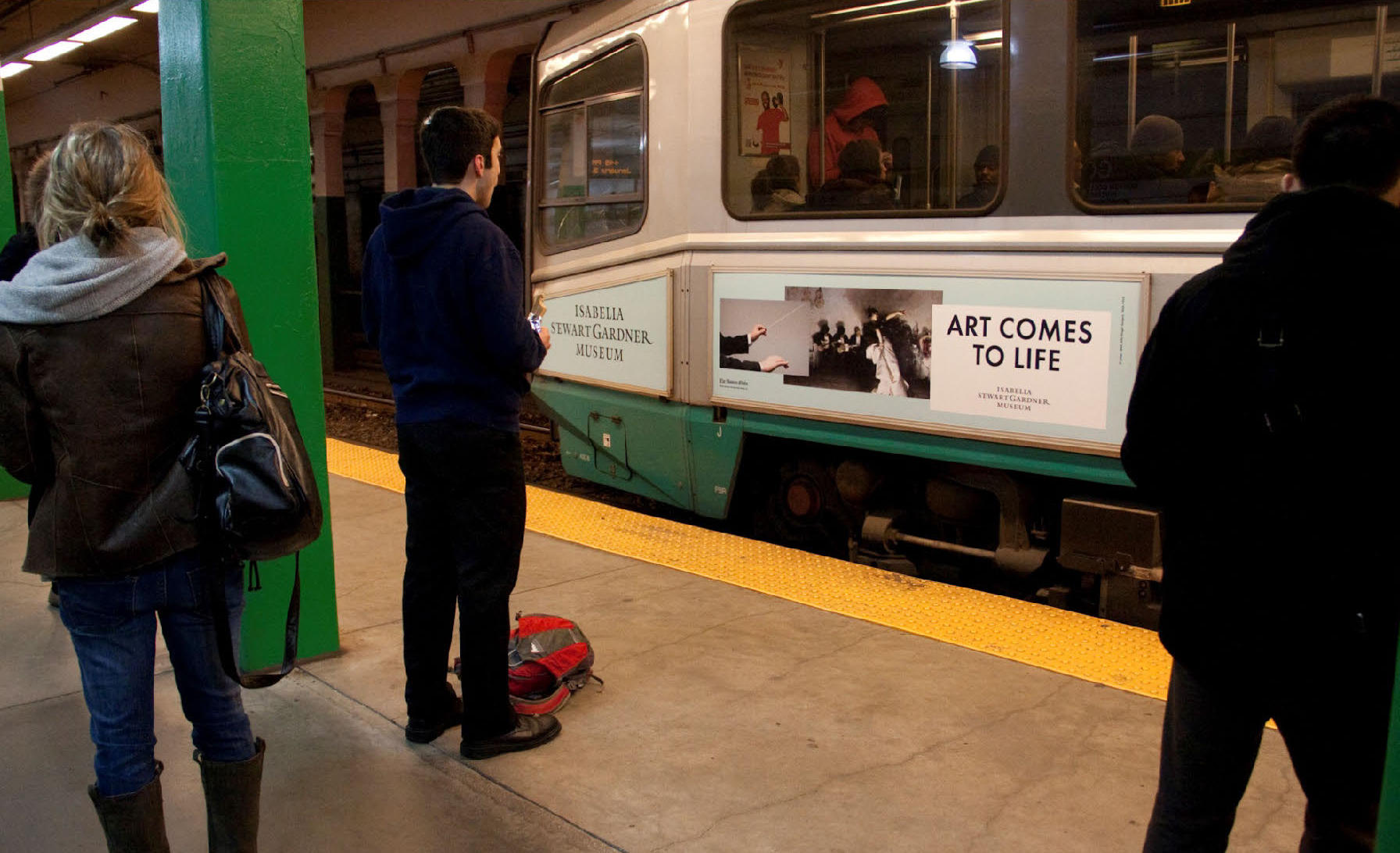
Green Line train with an advertisement for the Isabella Stewart Gardner Museum
The Ipswich Street line was retired by 1934, and now the Green Line E branch provides easy access to the Museum. Emulate Isabella, and keep in mind that public transportation remains one of the best ways to visit!
You Might Also Like

Directions & Parking
Find your best route to the Museum

Explore the Collection
Anders Zorn (Swedish, 1860-1920), Isabella Stewart Gardner in Venice, 1894

Know Before You Go
Read about the Museum's reopening protocol
